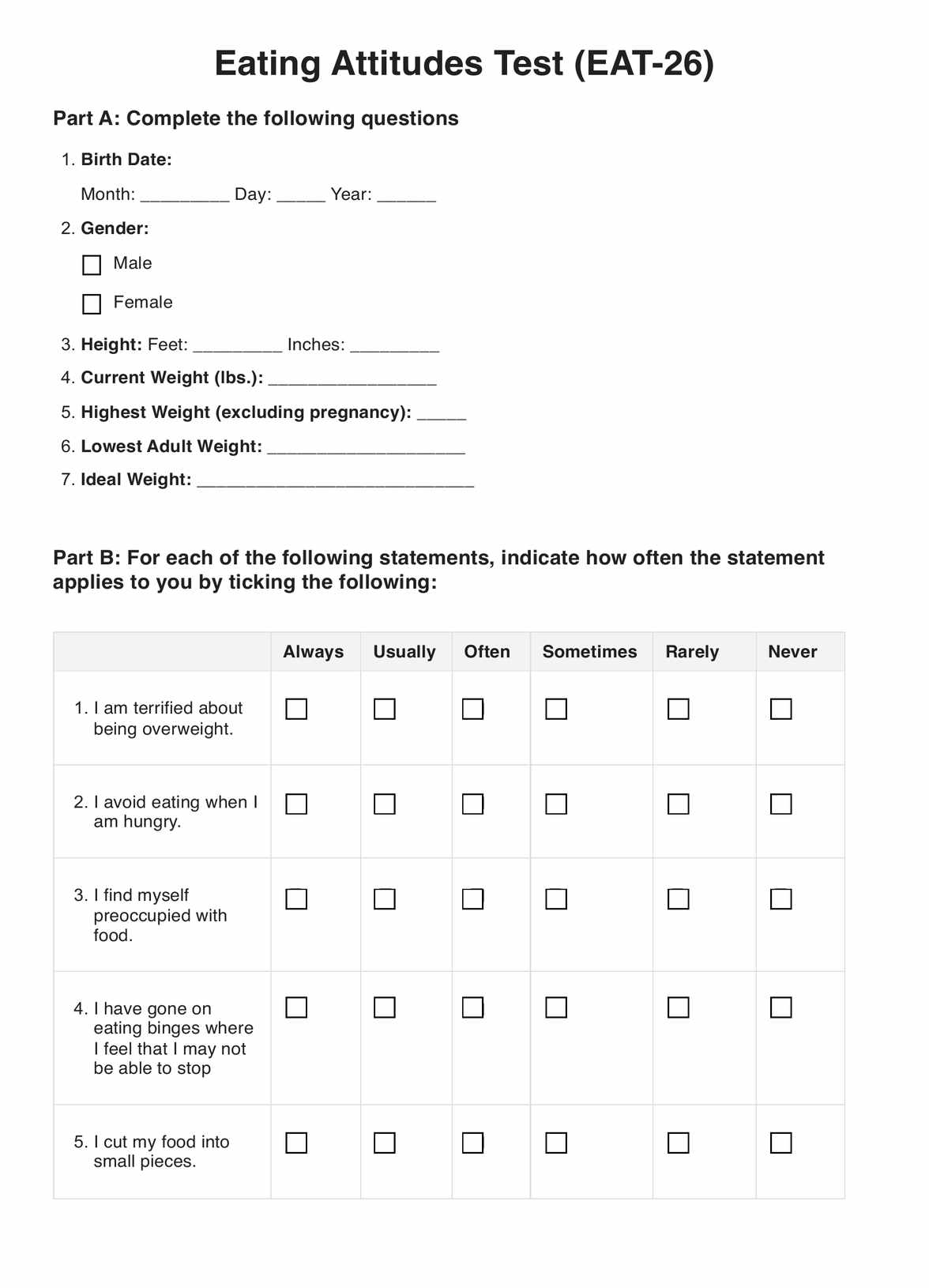The EAT-26 is used by healthcare professionals, including psychologists, psychiatrists, and dietitians, to screen for potential eating disorders. It's also used by researchers studying eating attitudes and behaviors.

Eating Attitudes Test
Discover the benefits of using the Eating Attitudes Test (EAT-26) in our comprehensive guide. Learn how Carepatron can streamline your EAT-26 assessments.
Eating Attitudes Test Template
Commonly asked questions
The EAT-26 can be used as a self-report measure by individuals concerned about their eating behaviors or by healthcare professionals as part of a comprehensive assessment process for eating disorders.
The EAT-26 is a self-report measure where respondents rate 26 items on a scale from "never" to "always". These responses are scored, and higher scores suggest a greater risk of disordered eating behaviors, indicating a need for further assessment.
EHR and practice management software
Get started for free
*No credit card required
Free
$0/usd
Unlimited clients
Telehealth
1GB of storage
Client portal text
Automated billing and online payments











